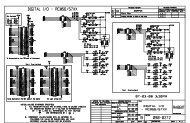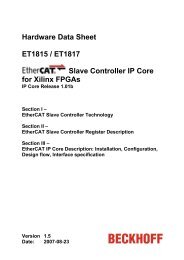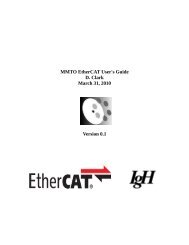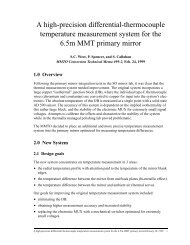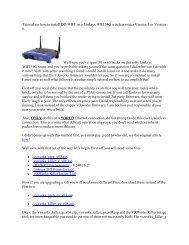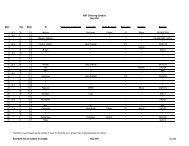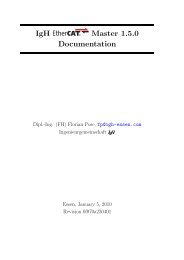GzOne Type-S Eng_R - NEC CASIO Mobile Communications, Ltd.
GzOne Type-S Eng_R - NEC CASIO Mobile Communications, Ltd.
GzOne Type-S Eng_R - NEC CASIO Mobile Communications, Ltd.
You also want an ePaper? Increase the reach of your titles
YUMPU automatically turns print PDFs into web optimized ePapers that Google loves.
SafetyWhat about wireless phone interference withmedical equipment?Radiofrequency energy (RF) from wireless phones caninteract with some electronic devices. For this reason,FDA helped develop a detailed test method to measureelectromagnetic interference (EMI) of implanted cardiacpacemakers and defibrillators from wireless telephones.This test method is now part of a standard sponsored bythe Association for the Advancement of Medicalinstrumentation (AAMI). The final draft, a joint effort byFDA, medical device manufacturers, and many othergroups, was completed in late 2000. This standard willallow manufacturers to ensure that cardiac pacemakersand defibrillators are safe from wireless phone EMI.FDA has tested hearing aids for interference fromhandheld wireless phones and helped develop avoluntary standard sponsored by the Institute of Electricaland Electronic <strong>Eng</strong>ineers (IEEE). This standard specifiestest methods and performance requirements for hearingaids and wireless phones so that that no interferenceoccurs when a person uses a “compatible” phone and a“compatible” hearing aid at the same time. This standardwas approved by the IEEE in 2000.FDA continues to monitor the use of wireless phones forpossible interactions with other medical devices. ShouldG’zOne TYPE-S 160harmful interference be found to occur, FDA will conducttesting to assess the interference and work to resolve theproblem. For more information, please visit the FDAwebsite at http://www.fda.gov/cellphones.Emergency callsNever rely solely upon your wireless phone for essentialcommunications (e.g., medical emergencies), if it can beavoided, since a wireless phone requires a complexcombination of radio signals, relay stations and landlinenetworks for its operation. Consequently, emergencycalls may not always be possible under all conditions onall wireless phone systems. Your wireless phone,however, may sometimes be the only available means ofcommunication at the scene of an accident. Whenmaking an emergency call, always give the recipient allnecessary information as accurately as possible. Neverterminate an emergency call until you have receivedclearance to do so. FCC Enhanced 911 (E911) RulesBackgroundThe Federal <strong>Communications</strong> Commission (FCC) requireswireless carriers to transmit specific latitude andlongitude location (Automatic Location Identification =ALI) information as well as “911” calls to Public SafetyG’zOne TYPE-S 161



